A Journey Through Palliative Care in the UK: Stories of Compassion and Learning

It was a crisp morning in London when I arrived at St Christopher’s Hospice, a place I had long admired from afar. This was where Dame Cicely Saunders had sown the seeds of modern palliative care, and now, decades later, I was walking through its corridors, eager to witness how those ideals had evolved.
I was received by Dr. Joy Ross, the medical lead, who welcomed me warmly. Though Heather Richardson, who had designed my entire visit, was away at a conference, her meticulous planning had ensured that every moment was meaningful.
Inside the Hospice: The Rhythm of Care
The morning began with a multidisciplinary meeting discussing home care patients. Doctors, nurses, social workers, the rehabilitation team, and a chaplain gathered around a table, carefully reviewing each case.
One case stood out—a Sudanese refugee living alone with advanced ovarian cancer. Her last wish was to be reunited with her family in Saudi Arabia. I watched as the team—doctors, social workers, and nurses—huddled together, making calls, arranging logistics, leaving no stone unturned. I too reached out to a palliative care specialist in Saudi Arabia through the Global Palliative Doctors Network, ensuring she would receive support upon arrival. In those moments, I realized—palliative care isn’t just about symptom control; it’s about preserving dignity, even in the smallest of wishes.
“This is what we do,” said Dr Ulka. later. “It’s not just about pain relief—it’s about honoring people’s last wishes.”
In the inpatient unit, rounds were about to begin after a similar multi disciplinary team meeting. I joined Dr. Joy Ross and Dr Shafika Banu, a familiar face from our Master Class in Kerala. As we moved from one patient to another, I was struck by the unhurried, deeply personal nature of care.
The rooms and facilities were world-class, yet it wasn’t the infrastructure that impressed me most—it was the teamwork. Every decision was made with careful deliberation, and patients were never just files or cases.
Beyond the Walls: A Compassionate Community in Action
St Christopher’s wasn’t just about inpatient care. I spent an afternoon with Mary Hodgson and her team, who were leading a remarkable community action plan.
“We want to change the way people think about death and dying,” Mary explained over a cup of coffee. “It’s not just a medical event—it’s a social experience.”
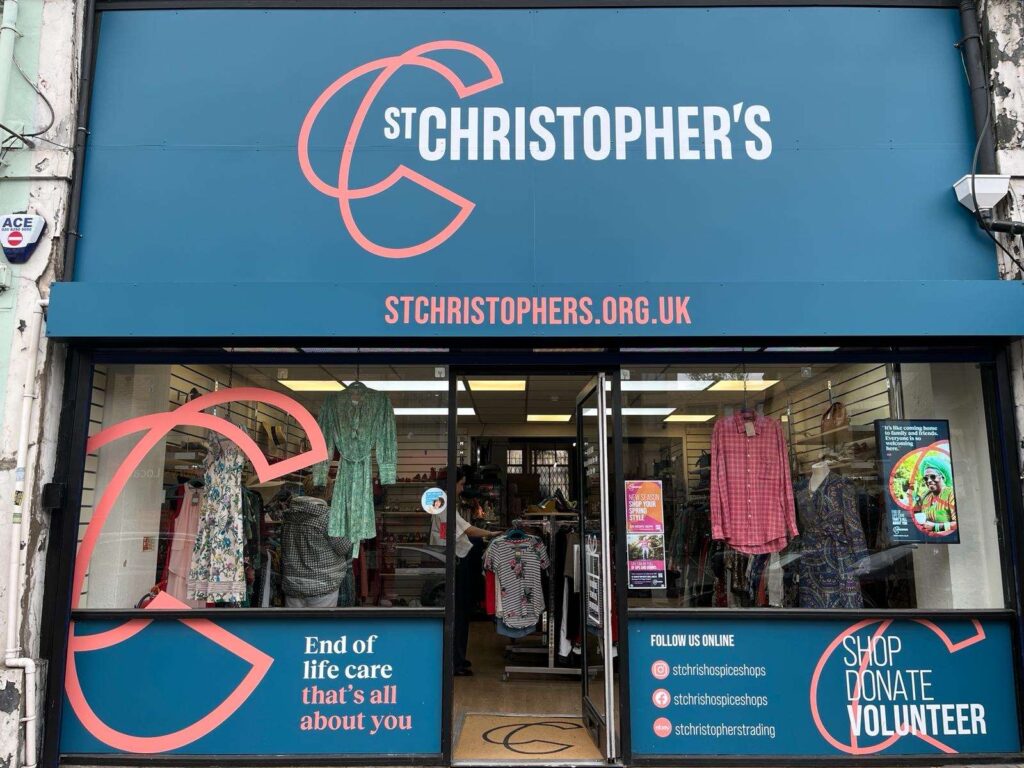
Here, volunteers played a key role, ensuring that no one faced the end of life alone. Whether it was sitting with a dying neighbor, supporting a grieving family, or simply starting conversations about death, the community was at the heart of palliative care.
It reminded me of Kerala’s own palliative movement, where volunteers form the backbone of care. Different worlds, but the same spirit.
A Story of Love and Resilience at Home
At St. Pancras Hospital of University College London, I witnessed a different kind of care—palliative support at home.
We visited a 72-year-old woman, recently discharged after a massive stroke. She was completely bed bound, but her wish was clear—she wanted to be at home, not in a hospital.
Her elderly husband doted on her, gently adjusting her pillows as he spoke about their 52nd wedding anniversary, just a week away. Their three daughters and one son took turns staying overnight, ensuring that she was never alone.
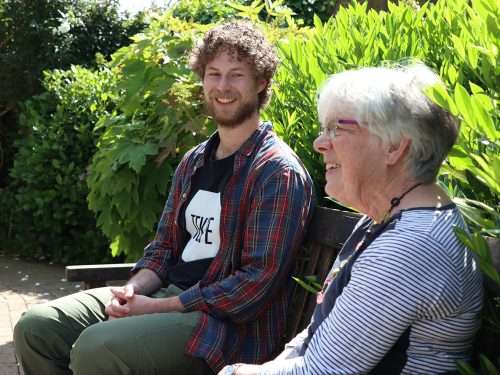
What struck me most was the invisible network of support surrounding them:
- A professional carer visited three times a day, free of cost, to assist with personal care.
- A district nurse ensured medications were provided at home.
- The palliative care team offered emotional and social support, closely coordinating with her local GP—all integrated through a single software system.
- Essential infrastructure for home-based care—including a hospital bed, wheelchair, syringe driver, and even a machine to transfer the patient from bed to wheelchair—was delivered free of cost by the concerned department.
I watched as Dr. Libby Sallnow, Associate Professor and Head of Department at the Marie Curie Palliative Care Research Department, University College London, sat with the family, listening patiently, ensuring a smooth transition from hospital to home-based care.
It was a masterclass in compassionate medicine—one that had little to do with prescriptions and everything to do with understanding people’s deepest needs.
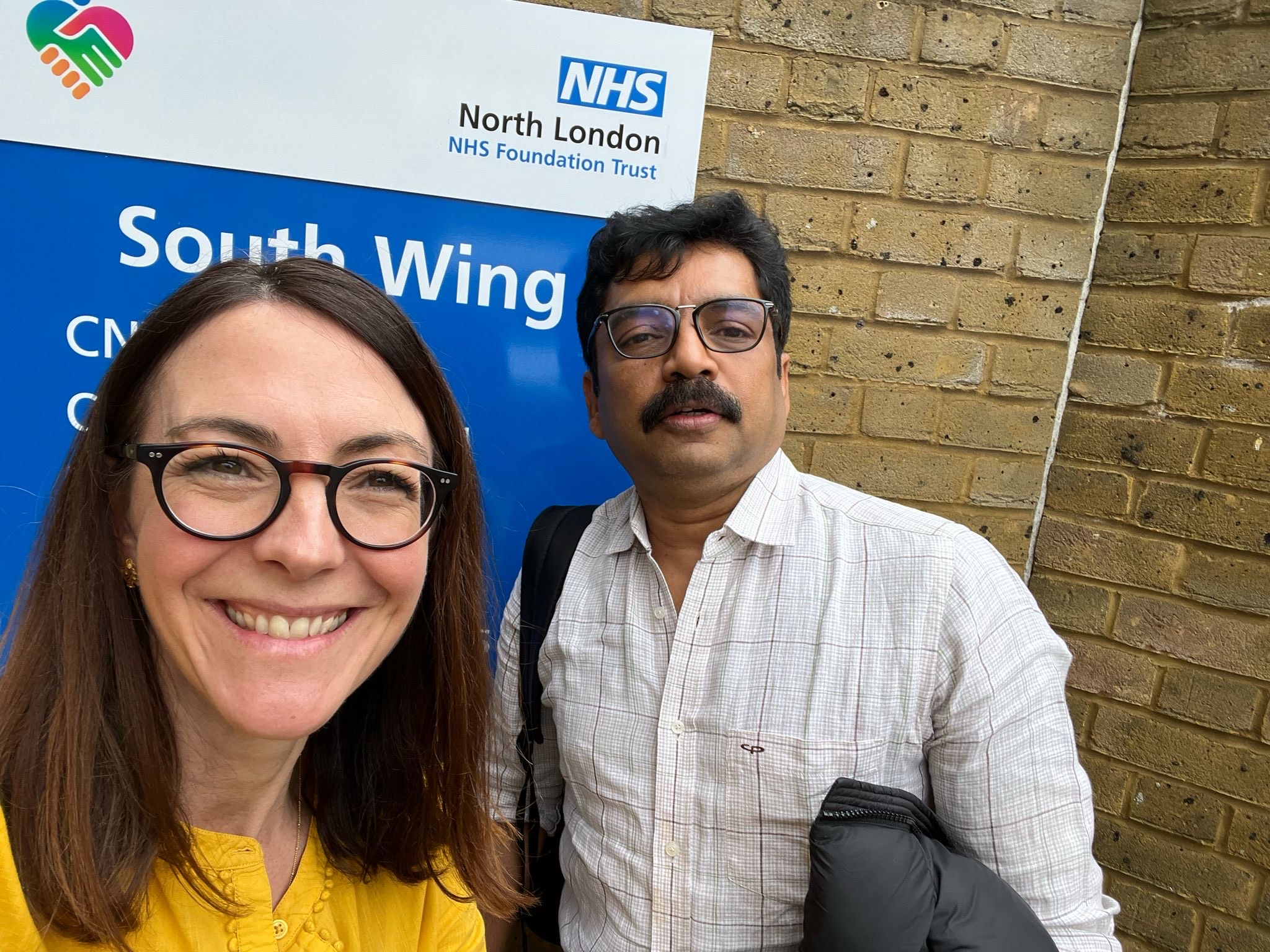
A Truck Driver’s Last Wish
Another day, another journey—this time with Dr Emma Hall of St Christopher’s community team to visit patients receiving care at home.
One of them was a 56-year-old truck driver with advanced lung cancer. His body was frail, his voice barely a whisper, but his eyes lit up when he spoke about his dream—marrying his long-time partner before he passed.
There was no hesitation from the team. They immediately began making arrangements for the ceremony. Hopefully, his partner would soon become his wife, and for a brief moment, illness would step aside for joy.
One of the most striking aspects of St Christopher’s was its comprehensive bereavement services—not just for families of those who had been cared for at the hospice, but for anyone in grief. This inclusive approach ensures that no one has to navigate loss alone.
I had the opportunity to meet Fiona, who leads this remarkable program. She explained how they provide both adult and child bereavement support, tailored to individual needs. Grief is not a linear journey, and St Christopher’s acknowledges this by offering counseling, group therapy, creative sessions, and community support for as long as needed.
It was a reminder that palliative care does not end with the patient—it extends beyond life, ensuring that families are supported long after their loved ones have passed.
Dorothy House: Palliative Care in the Countryside
My journey then took me west—to the rolling hills of Bath, where Dorothy House Hospice stood in quiet elegance. Unlike the urban setting of London, this was a rural hospice, deeply integrated into the local community.
I was welcomed by Wayne De Leeuw, a man whose passion for palliative care was evident in every conversation. Under his leadership, Dorothy House had adapted to the financial challenges of hospice care—relying heavily on charity and community support. Like St Christopher’s, only 20% of their funding came from the government, with the rest sustained by donations, legacy giving, and fundraising efforts.
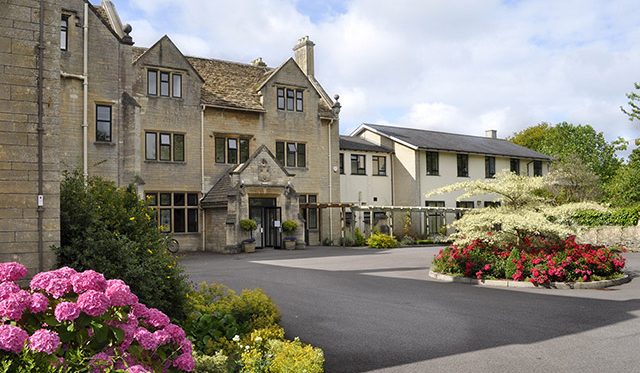
But what they lacked in financial security, they made up for with deep-rooted community engagement. Families, volunteers, and local businesses came together to ensure that the most vulnerable had access to dignified end-of-life care.
I spent time with the team, discussing sustainability in hospice care, funding models, and the future of palliative care in an aging society.
Here, I met Prof. Candy McCabe, an expert in palliative care research. Dorothy House wasn’t just about caring for patients—they were also committed to training the next generation of palliative care professionals.
One evening, as I sat in the hospice gardens, watching families visit their loved ones, I felt a profound sense of connection—to the people, to the mission, and to the universal truth that love and care transcend all boundaries.
Lessons to Take Home
As my time in the UK came to an end, I reflected on the journey—one made possible by the generosity and meticulous planning of Dr. Suresh Kumar and Heather Richardson. Their efforts ensured that every moment was insightful, and I am deeply grateful to them.
The UK’s healthcare system, despite its challenges, remains a beacon of structured, well-integrated care, particularly for the elderly. It is a system that should never fail because it upholds a fundamental human need—dignity in the final stages of life.
In contrast, Kerala’s model thrives on community-driven initiatives, proving that palliative care is not just about resources but about the will to care.
But whether in London, Bath, or Kerala, the essence remains the same—compassion, dignity, and the belief that no one should suffer alone.
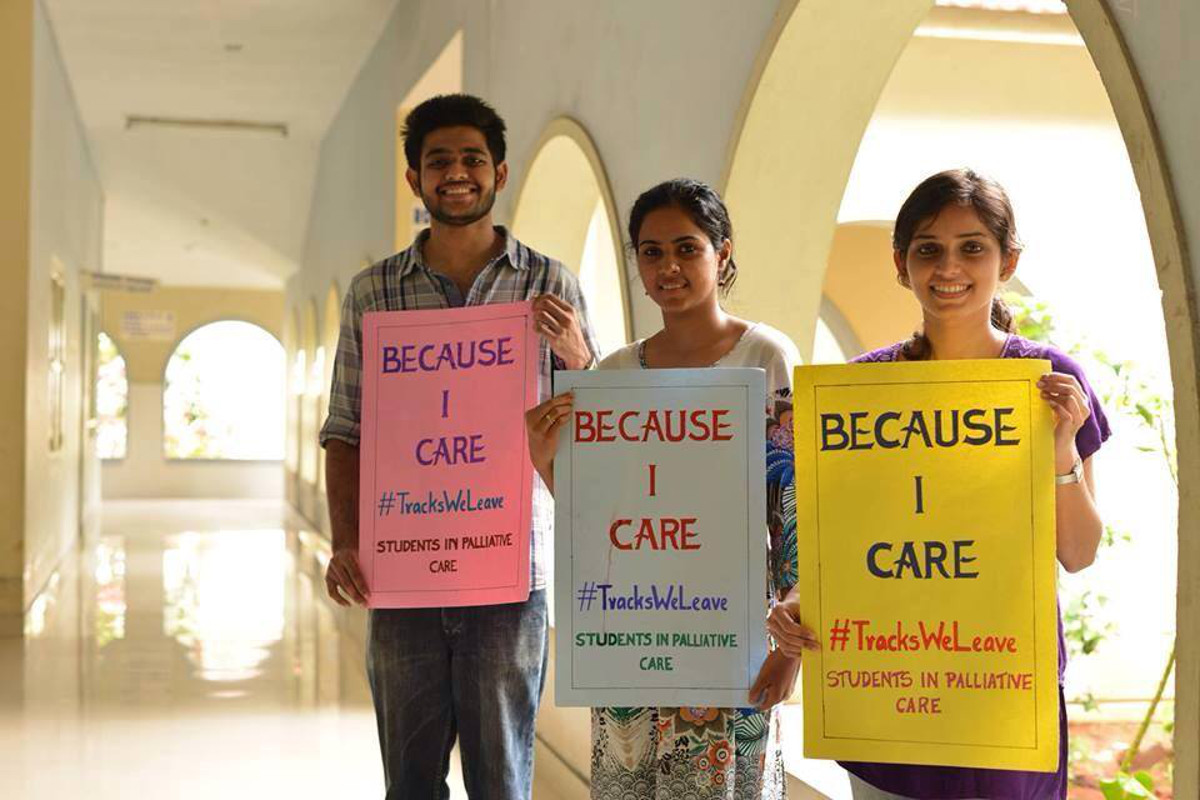
During my visit to Dorothy House, I had the opportunity to discuss these contrasts in a conversation with James Byron, Director of Marketing & Engagement. In a brief interview, I shared my reflections on how Kerala and the UK approach palliative care, highlighting the strengths and challenges of each model. Watch the interview here.
As my plane took off, I realized I wasn’t just carrying back professional insights—I was bringing home stories. Stories of resilience, love, and the unwavering human spirit. And perhaps, within these stories, lies the blueprint for the future of palliative care everywhere.
This article was first published on ehospice.com and can be read here.





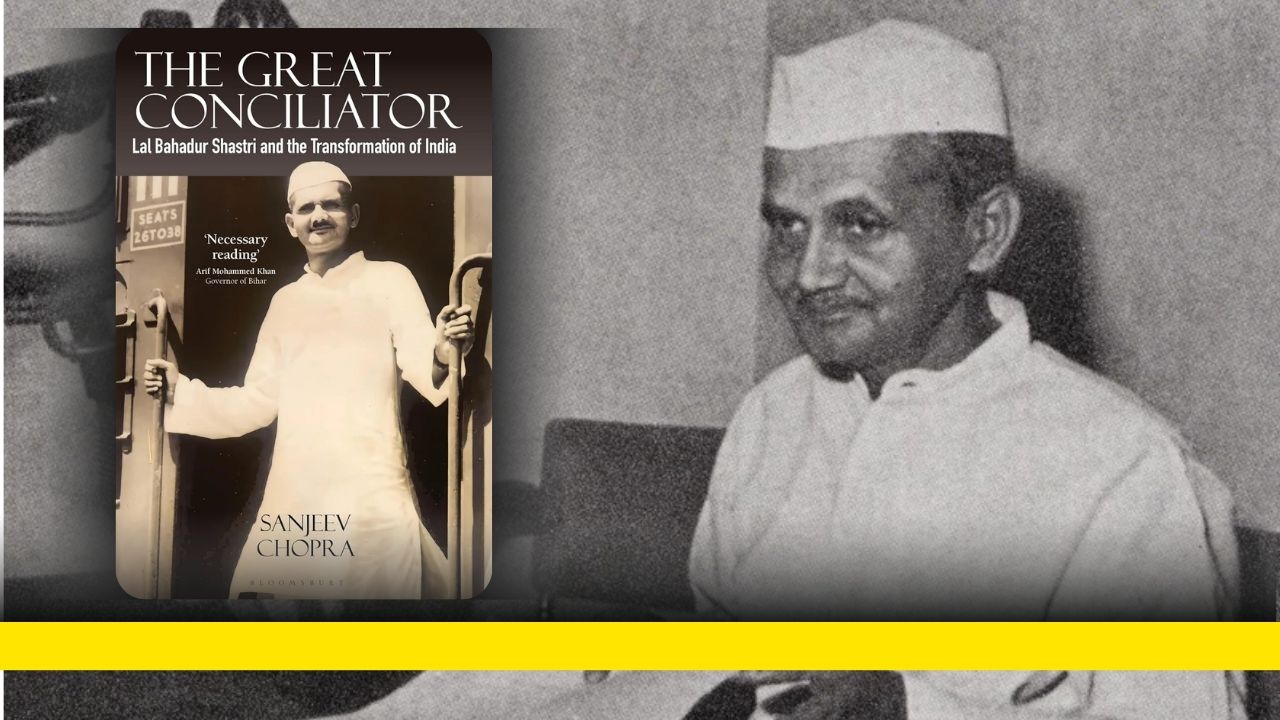






Excellent article, amazing story, thank you for doing it.